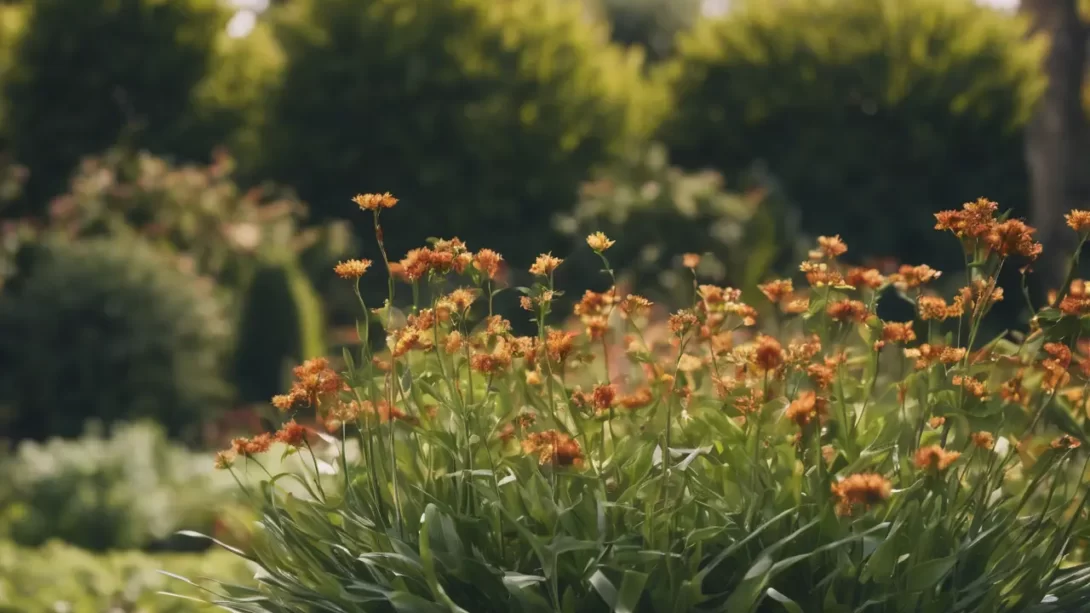When we think of wind chill, it’s often in the context of how cold it feels to us on a breezy winter day. However, for gardeners and plant enthusiasts, an important question arises: does wind chill affect plants in the same way? This article delves into the science of wind chill and its impact on plant health, exploring how plants respond to and are affected by cold winds.
Wind Chill
Wind chill is a term commonly used to describe how cold the air feels on human skin when wind is factored in. It’s calculated based on the rate of heat loss from exposed skin due to wind and cold. As the wind increases, it carries heat away from the body more rapidly, making it feel much colder than the actual air temperature. However, it’s crucial to note that wind chill is a human-centric concept, designed to gauge the effects of cold wind on human skin and not directly applicable to inanimate objects or plants.
The distinction between air temperature and wind chill is important in understanding its potential effects on plants. Unlike humans and animals, plants do not generate internal heat that can be lost to wind chill. Therefore, the concept of wind chill might not translate directly to plant physiology, but the impact of cold temperatures combined with wind still warrants exploration for gardeners.
Basic Botany: Plant Responses to Cold
Plants react to cold temperatures in various ways, depending on their species and hardiness. Plant hardiness refers to a plant’s ability to withstand cold temperatures and is a key factor in determining which plants can survive in different climates. Some plants are more tolerant of cold and can survive freezing temperatures, while others are susceptible to damage or death from cold stress.
Cold temperatures can trigger several responses in plants, such as dormancy, a state in which growth and metabolic processes slow down significantly. This is a survival mechanism allowing many plants to endure winter. Additionally, plants have various physiological adaptations to cope with cold, such as altering the composition of cell membranes and increasing sugar concentration in cells, which can act as a natural antifreeze. Understanding these mechanisms is essential to grasp how wind and low temperatures might affect plants differently than they do humans.
When we think of wind chill, it’s often in the context of how cold it feels to us on a breezy winter day. However, for gardeners and plant enthusiasts, an important question arises: does wind chill affect plants in the same way? This article delves into the science of wind chill and its impact on plant health, exploring how plants respond to and are affected by cold winds.
The Direct Effects of Wind on Plants
Wind, regardless of its temperature, can have a significant impact on plants. One of the primary concerns is desiccation, or drying out. Wind can increase the rate at which moisture evaporates from the soil and plant surfaces, leading to dehydration. This is particularly problematic in winter when water uptake is already reduced due to lower soil temperatures. Plants exposed to strong winds may show signs of wilting, browning at the edges of leaves, and stunted growth due to this loss of moisture.
Additionally, wind can cause physical damage to plants. Strong winds can break branches, tear leaves, and even uproot entire plants. Young, tender plants and tall, top-heavy plants are especially vulnerable to physical wind damage. Furthermore, wind plays a role in regulating plant temperature. On a windy day, the constant movement of air can prevent the formation of a microclimate around the plant, leading to more significant temperature fluctuations that can stress the plant.
Wind Chill and Plants: The Real Impact
While the concept of wind chill is specific to human perception, the combination of cold temperatures and wind can still affect plants. Plants do not experience wind chill in the same way humans do, as they do not have skin that loses heat. However, the cooling effect of wind can exacerbate the stress that plants experience during cold conditions. For instance, a combination of cold temperatures and wind can lead to quicker freezing of plant tissues, potentially causing more damage than still, cold air.
Scientific studies on plant responses to wind chill are limited, but the consensus is that wind can enhance the effects of cold temperatures on plants. For example, in evergreen plants, cold winds may increase the rate of frost damage to leaves and needles, as these plant parts continue to transpire (lose water) and cannot replenish lost moisture due to frozen soil. Deciduous plants, which lose their leaves, are somewhat more protected against wind chill effects in their dormant state.
The extent to which wind chill affects a particular plant depends on several factors, including the plant’s hardiness, the duration and intensity of the wind and cold, and the plant’s hydration levels. Gardeners in areas with strong winds and low temperatures should be particularly mindful of these factors when selecting and caring for their plants.
Protecting Plants from Harsh Winter Winds
Given the challenges posed by cold winds, it’s crucial for gardeners to implement strategies to protect their plants. One effective approach is to create windbreaks. Planting dense shrubs or trees, or installing physical barriers like fences or screens, can significantly reduce wind speed and protect more vulnerable plants. Positioning these windbreaks on the windward side of the garden, typically the north or west, will offer the best protection.
Mulching is another essential practice for safeguarding plants against cold wind effects. Applying a thick layer of mulch over the soil can help retain moisture, insulate plant roots from temperature fluctuations, and reduce the risk of frost heaving. Organic mulches like straw, bark, or leaf litter are particularly effective.
For smaller or more delicate plants, individual protection might be necessary. Using cloches, burlap wraps, or frost blankets can shield plants from cold winds, especially during nighttime or extreme weather events. It’s important, however, to allow for some air circulation to prevent moisture buildup and potential fungal diseases.
Recommendations for Winter Plant Care in Areas with High Wind Chill Factors
In regions where wind chill is a significant factor, selecting plants that are well-suited to these conditions can make a big difference. Opt for species known for their hardiness and ability to withstand wind and cold. Evergreens and native plants are often good choices, as they are typically adapted to the local climate.
Watering plants appropriately during the fall can also prepare them for winter. Ensuring that plants go into the winter with adequate moisture can help prevent desiccation. However, avoid overwatering, as this can lead to root problems and increased frost damage.
Regular monitoring and maintenance of the garden during the winter months are essential. After severe weather events, check for and address any damage promptly. This can include re-securing protective coverings, removing broken branches, or providing additional mulch.
Conclusion
While plants do not experience wind chill in the same way humans do, the combination of cold temperatures and wind can have a notable impact on their health and survival. By understanding how wind affects plants and implementing protective measures, gardeners can mitigate these effects and maintain healthy gardens even in challenging winter conditions.
Awareness of the unique needs of different plant species, coupled with proactive garden management, can ensure that your plants not only survive but thrive, regardless of the harshness of the winter weather. With the right preparation and care, the beauty and vitality of your garden can be preserved through the coldest and windiest seasons.




